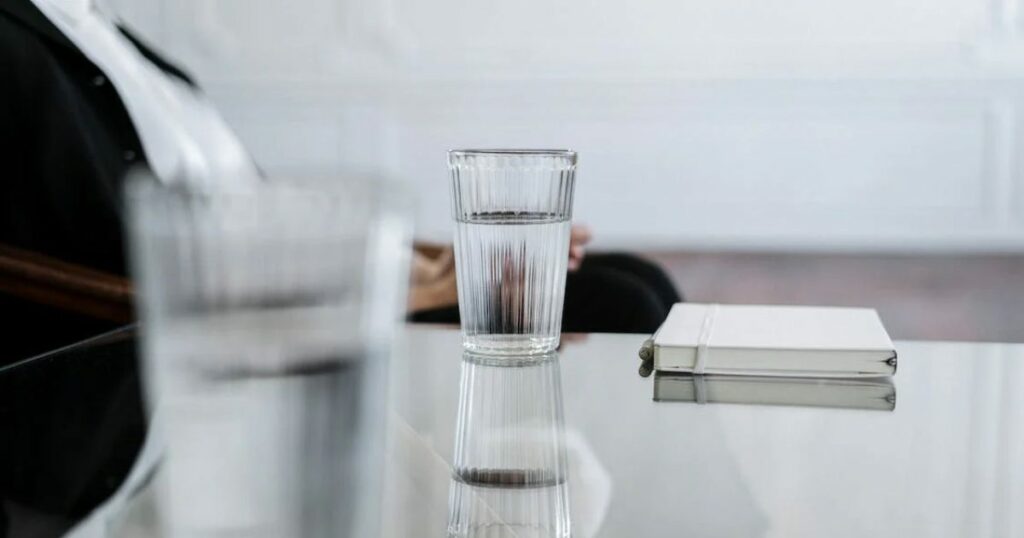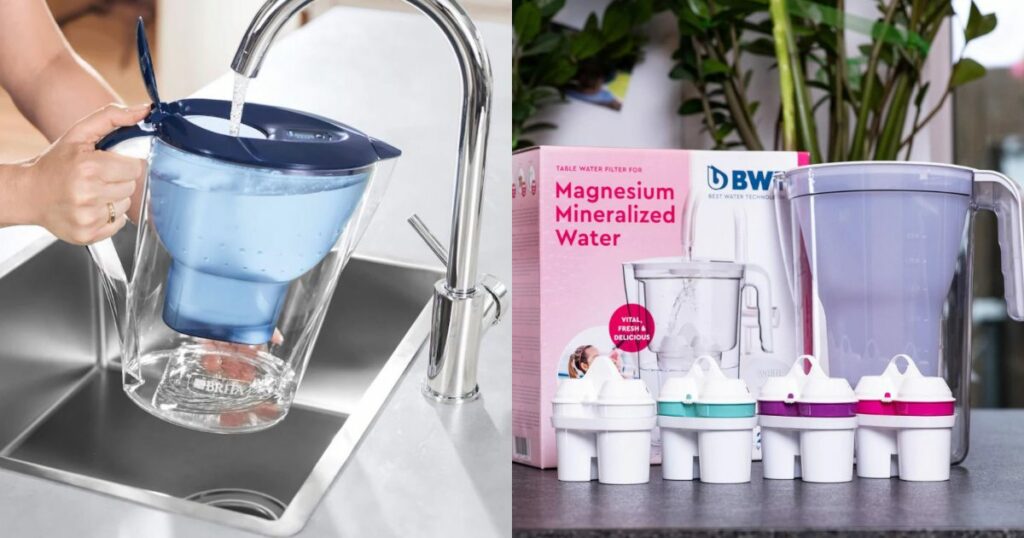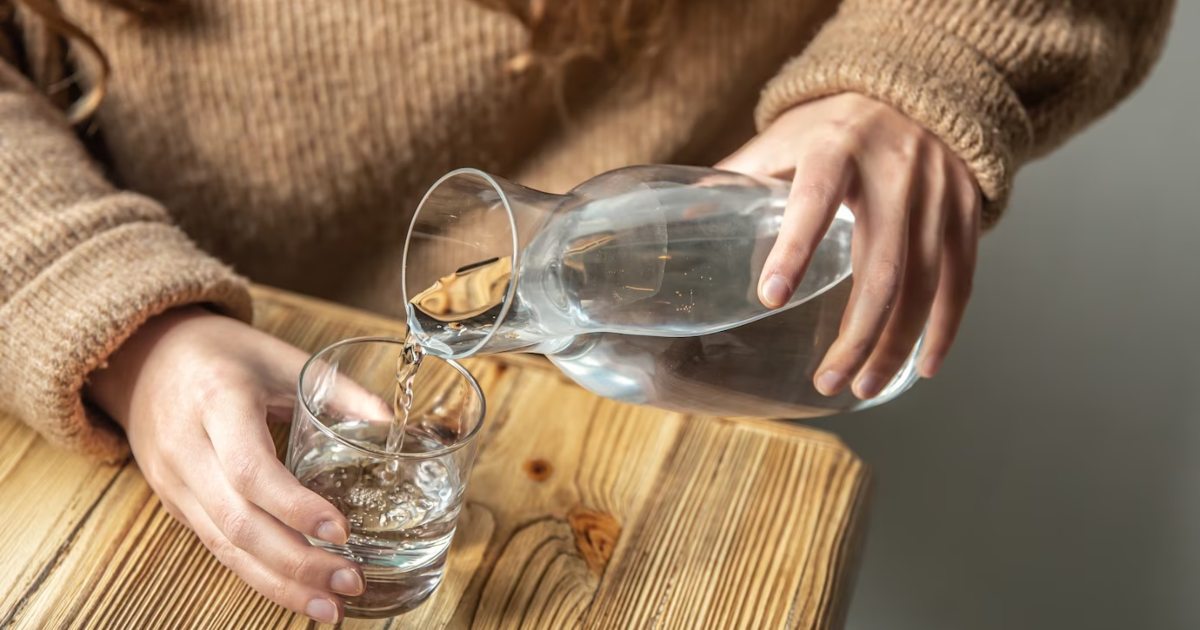Clean drinking water is one of the basic human rights. But how come every third person in the world still does not have access to clean water – that is what bothers us the most. And so this motivates us even more to write articles and spread our message about how important water is to our health. But before that we want to find out what exactly is considered to be clean water?
It is tricky to answer that question because without further inspection, nobody can really tell if the water is clean or not. It is certainly not about the color or any other signs. And that is why it’s so important to know of all of the ways you can find and tell when your water is clean.
So in this article, we will aim to gather the best information about what clean drinking water is. Then we will also look at other water-related topics on when the water is healthy and when it is not!
This is what our article consists of:
- What is clean drinking water
- Still for a long time – is it still drinkable
- Access to clean water in the city and nature
- How to purify water yourself
So let’s get started! Let’s begin with the definition of clean water!
What is clean drinking water
So to start off, you have to understand what is considered to be clean drinking water. For example, we know that many parts of the world lack access to water. But hey, remember that simply water alone is not enough! There has to be clean drinking water that we can use. Clean water is important because clean water is safe water.
It is easiest to define clean, safe water as “water that will not harm you and come into contact with it”.
That is so because pure water is characterized by its purity, clarity and absence of harmful substances. It is mainly free of contaminants such as bacteria, viruses, chemicals, heavy metals, sediments and pollutants that can adversely affect human health and ecosystems.
When we talk about clean water, we often talk about drinking water, but it is just as important that the water you use at home is also clean.
Domestic water includes water used indoors and outdoors for:
- drinking,
- cooking,
- swimming,
- brushing teeth,
- washing dishes,
- washing clothes,
- house cleaning,
- watering indoor plants, etc.
Pure, clean drinking water is transparent in appearance, neutral in taste and smell. It should not have a perceptible odor to humans. According to the regulation of the US Environmental Protection Agency, clean water does not exceed 90 pollutants and the number of microorganisms. Although 90 sounds like a lot, one drop of water can contain various microorganisms that are harmful to human health.
Remember that it is important to drink enough water daily. Clean water must be a resource for sustaining life, promoting good health and ensuring the well-being of both people and the environment.
Still for a long time – is it still drinkable

Have you ever drank water from a glass left on the nightstand and realized it tasted different? This change is due to carbon dioxide. Leaving a glass of water uncovered for even as little as 12 hours causes the carbon dioxide in the air to mix with it. This lowers the pH level of the water and gives it an unpleasant taste. However, the water is still drinkable at this point.
Most experts believe that tap water has a shelf life of six months. After this period, however, the chlorine in the water disperses to such an extent that bacteria and algae begin to grow in it. Of course, the warmer the water is stored, the faster bacteria start to form.
Several factors can contribute to the deterioration of clean water:
- Microbial growth – stagnant water provides a favorable environment for the growth of microorganisms such as bacteria, algae and fungi. These organisms can multiply and contaminate water, potentially endangering human health.
- Sedimentation – over time, particles and sediment in the water can settle to the bottom, affecting water clarity. This sedimentation process can give water a cloudy appearance and affect its taste.
- Dissolved gases – standing water can absorb gases from the atmosphere, changing its composition. For example, carbon dioxide can dissolve in water, creating slight acidity and affecting the pH balance.
Therefore, it is recommended to avoid standing water as much as possible. And whenever possible, choose fresh, running water.
Access to clean water in the city and nature

Access to clean water is essential whether you are in an urban environment or surrounded by nature. In both cases, there may be a need for water. Where to get it?
Clean water in the city
In a modern and developed city, providing clean water should not be a problem. Especially if you can afford to buy water for money.
Clean water from the tap
Most modern cities have a centralized water supply system that provides purified and safe drinking water to residents. This water undergoes purification processes such as filtration, disinfection and chlorination to ensure its purity.
Publicly available clean water
In addition to water in homes, cities provide more public drinking stations. A place to come and drink clean water and/or fill your own water bottle while going about your daily routine.
Bottled water
Commercially available bottled water is another option for obtaining clean water in urban areas. This is the most common way of obtaining drinking water, which we often don’t think twice about.
We stand for the fact that clean, drinking water should be available to everyone, and free of charge. Of course, it is always important to make sure that the water meets regulatory standards and has been properly filtered and purified.
Water filters and purifiers
If, however, the water in your home does not inspire confidence, you can install a water filter or purifier, which will help ensure clean water. Such systems can remove impurities and contaminants, improving the quality of tap water.
Good water filters successfully cope with water purification, and do it quite quickly. Therefore, for safety reasons, we recommend choosing a filter for your daily needs. Especially if you don’t live in the city center and have reasonable doubts about the quality of the water.
Pure water in nature
Nature can also spoil us with clean water, but it is not always so easily available.
Natural water sources and wells
Some natural springs and wells can provide clean and safe drinking water in certain areas. However, it is important to test the water for possible contaminants before using it.
Rivers and streams
In pristine areas, flowing rivers and streams can often provide clean water that is safe to drink. However, it is important to be cautious, as water sources near populated areas or agricultural areas may contain various contaminants.
Therefore, it is best to make sure of the water quality. And if it is not possible to do this – purify the water yourself.
How to purify water yourself

If you are out in nature without access to clean water sources, there are various methods of water purification that can be used. These include boiling, using water filters or purifiers, or chemical treatment such as iodine or chlorine tablets.
In situations where you need to clean the water yourself, there are several methods available to purify the water and remove contaminants. Check out our article on Different types of water filters to see if you need to choose any of those options for your home.
Water purification methods you can use:
- Boiling – boiling water is one of the simplest and most effective methods of killing pathogens. Bring the water to a boil for at least one minute (or three minutes for larger volumes) to ensure its safety.
- Filtration – water filters designed for home use can effectively remove harmful impurities and contaminants from tap water. Look for filters that are certified to recognized standards and choose the right filter based on the contaminants you want to remove.
- Chemical disinfection – chemicals such as iodine or chlorine can be used to disinfect water. Follow the instructions attached to the specific disinfection method, as dosage and contact time may vary.
- Copper bottles – science supports copper water bottles, positively evaluating the antibacterial, anti-carcinogenic and anti-inflammatory properties of copper, which make drinking water better for human nutrition.
- Ultraviolet (UV) Purification – UV water purifiers use ultraviolet light to kill or deactivate microorganisms. These devices are convenient for individual use, but the manufacturer’s instructions must be followed to ensure effective purification.
- Smart water bottles could be another solution – if they have purifying effect, they will not only remind you to drink enough water but also clean it for you.
It is important to note that these methods may not remove certain types of contaminants, such as heavy metals or chemical contaminants. In such cases, professional help may be necessary.
Drinking water is one of the most important basic human rights, so we believe that clean water should be available to everyone.

